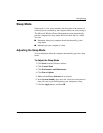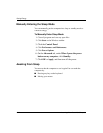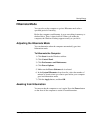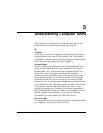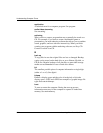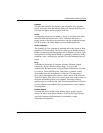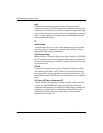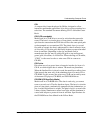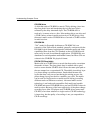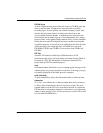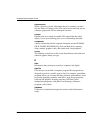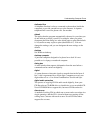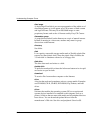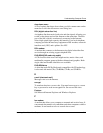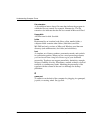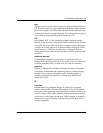
5–6 Learning More About Your Computer
Understanding Computer Terms
CD-ROM drive
A drive that reads a CD-ROM (or music CD) by shining a laser into
the clear plastic base and interpreting the way the laser light is
reflected by the shiny aluminum layer. The CD-ROM drive is
read-only; it cannot write to a disc. Most modern drives can also read
a CD-R (unless written in multi-sessions by a CD-RW drive). Only
the newest multi-session CD-ROM drives can read a CD-RW written
in multi-sessions.
CD-ROM XA
“XA” stands for Extended Architecture. CD-ROM XA is an
extension of the Yellow Book standard, generally consistent with the
ISO 9660 logical format, but designed to add better audio and video
capabilities taken from the CD-I standard so that a CD-ROM could
more easily be used for multimedia applications. CD-ROM XA was
abandoned as an independent multimedia format, but Photo CDs are
written in the CD-ROM XA physical format.
CD-RW (CD-Rewritable)
Media used in a CD-RW drive to record data that can be overwritten
thousands of times. The clear plastic base is molded with a spiral
track to ensure that the CD-RW drive follows the same spiral path as
the one stamped on a conventional CD. The middle (recording) layer
is a phase-change crystalline mixture. Sandwiched between two
layers that draw away excess heat during the writing process, the
phase-change layer gives the disc a metallic grey color. The media
can be used for single-session or multi-session writing (recording
different tracks on different occasions). Advanced multi-session
technology is not backward-compatible. Only multi-read capable
CD-ROM and newer DVD-ROM drives can read CD-RWs written in
multi-sessions. Because of the lower reflectivity of the phase-change
recording layer, older CD players and CD-ROM drives cannot read
CD-RWs, even when written in a single session. CD-RW technology
is improving, but the quality of recordings is not yet comparable to
CD-R recordings.



